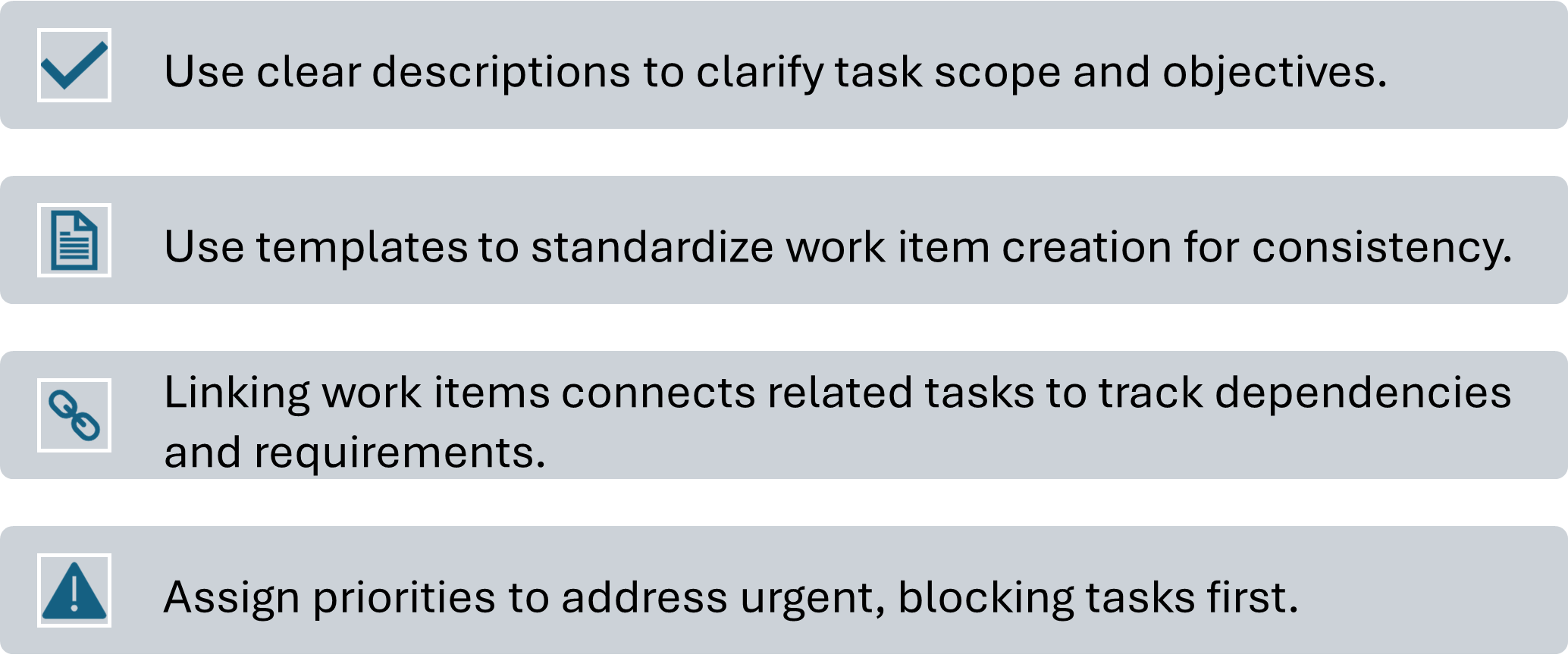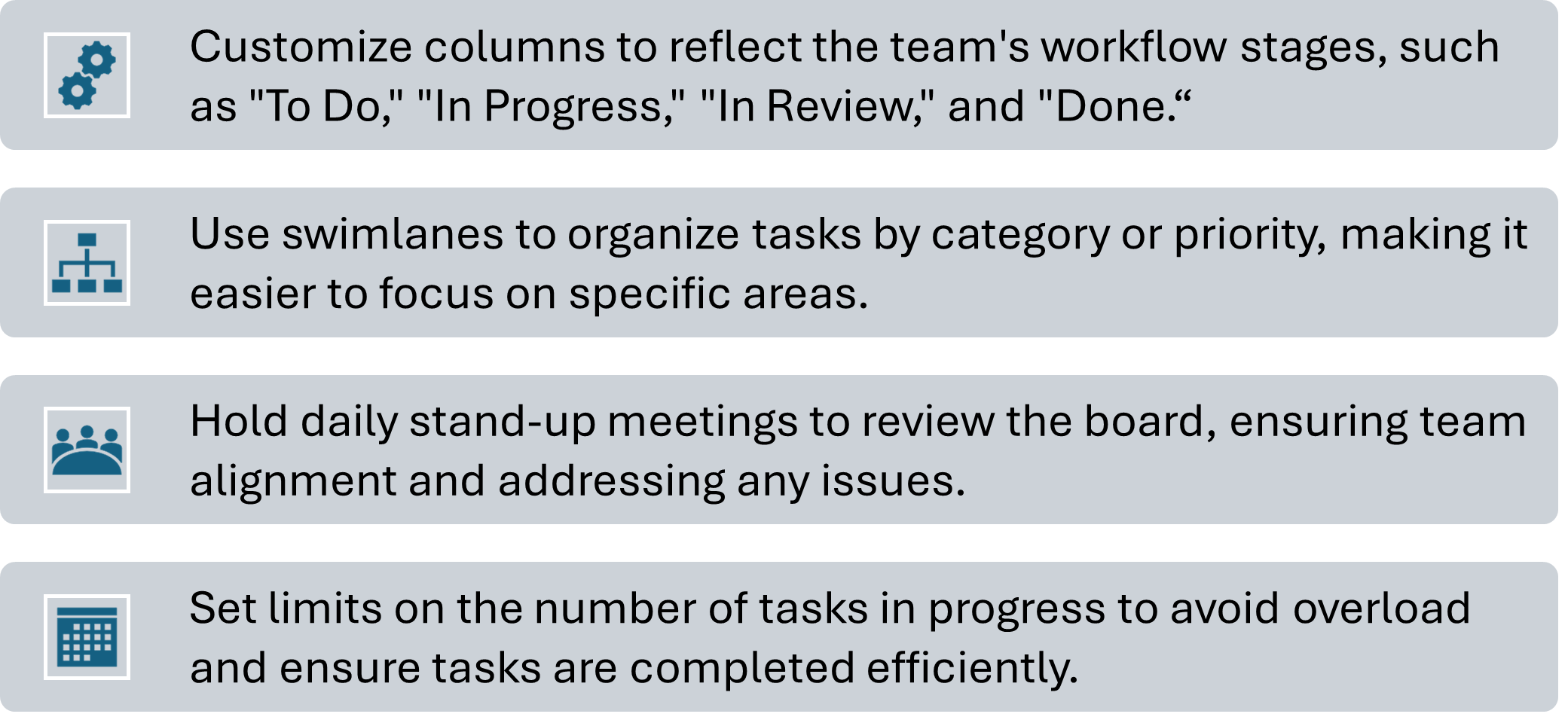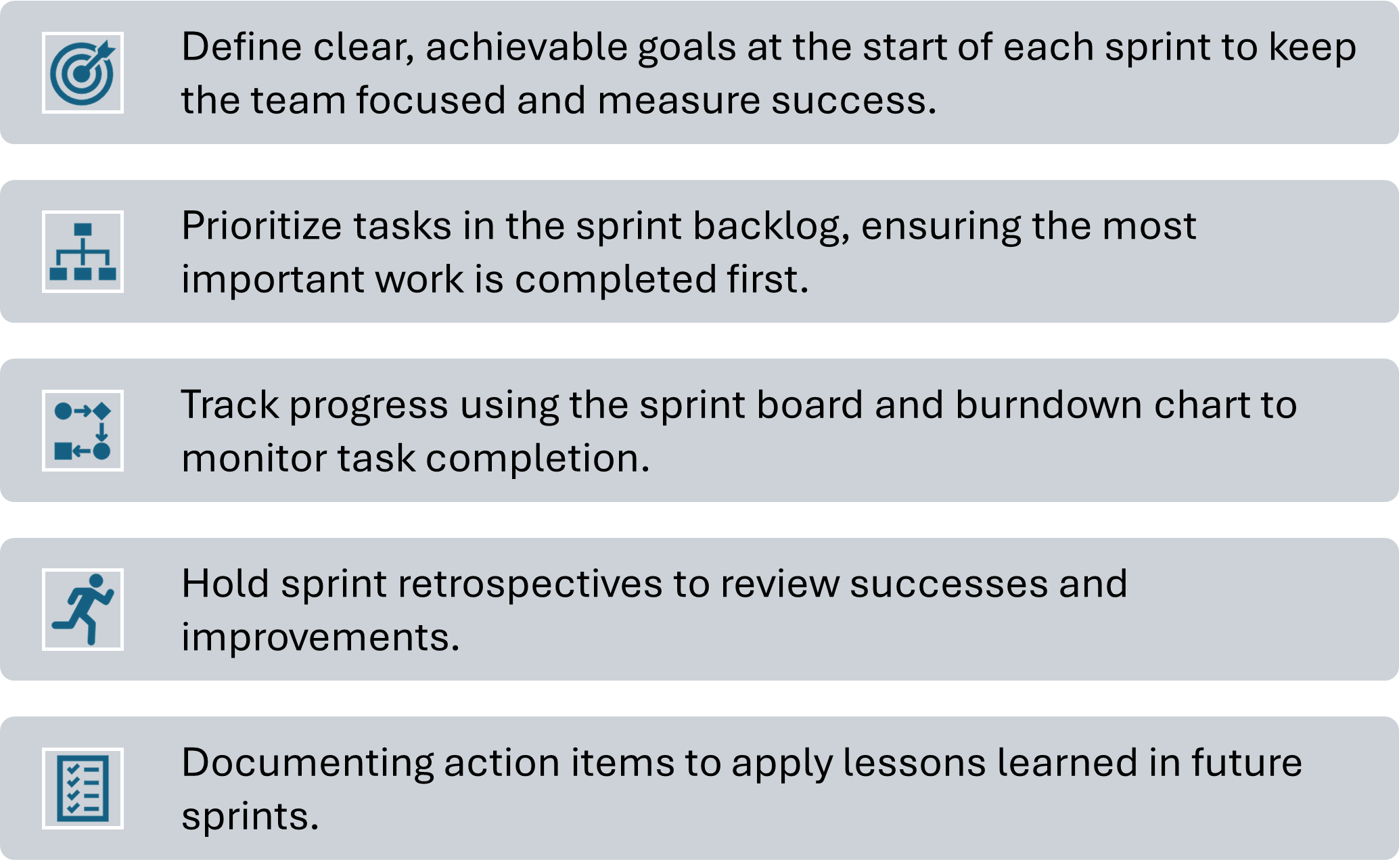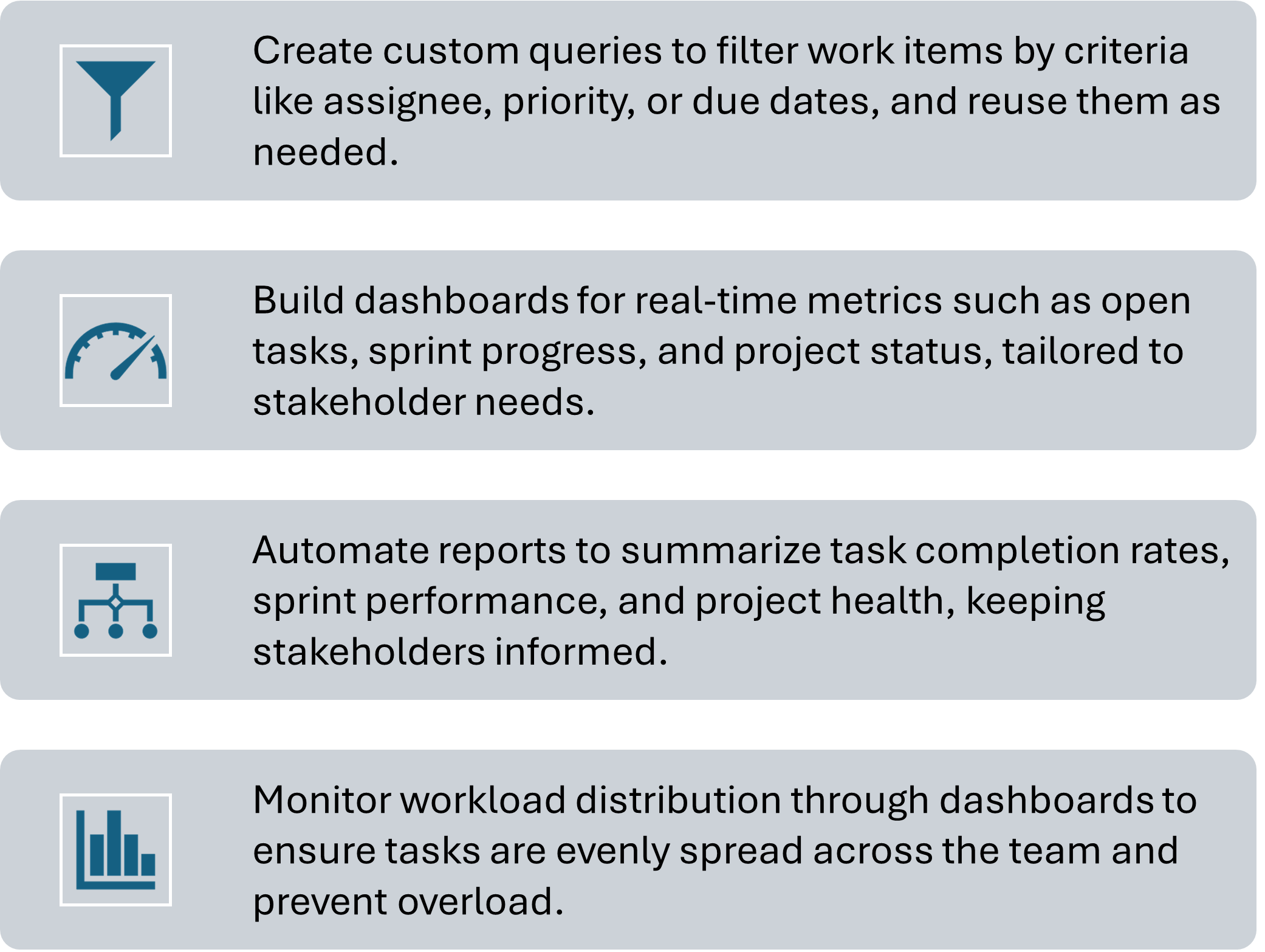Best Practice & Usage Guidelines
| Version | Modified By | Approver | Date | Changes made |
|---|---|---|---|---|
| V1.0 | Daniel McAulay | Daniel McAulay | 17/09/2024 | Document Creation |
6. Best Practices for Using Azure Boards
To ensure the successful implementation and ongoing use of Azure Boards within the Redback Operations Cyber Security Team, it is essential to follow established best practices. These practices will help each team manage their tasks efficiently, maintain clear communication, and ensure that all projects are completed on time and to a high standard.
6.1 Structuring Work Items
Work items are the building blocks of Azure Boards, representing tasks, user stories, bugs, and other units of work that need to be tracked and managed. Properly structuring these work items is crucial for maintaining organization and clarity.

6.2 Task Assignment and Management
Efficient task assignment ensures that work is distributed evenly across the team and that each task is handled by the most qualified team member. Proper management of these tasks is essential for maintaining momentum and avoiding bottlenecks.

6.3 Using Boards and Views Effectively
Boards in Azure Boards provide a visual representation of the team's workflow, making it easy to track the progress of tasks and identify any bottlenecks. Configuring these boards to reflect the team's processes is essential for efficient management.

6.4 Managing Backlogs
The backlog is a key component of Azure Boards, representing a prioritized list of work items that need to be addressed. Effective backlog management ensures that the most important tasks are completed first and that the team is always working on the highest-value activities.

6.5 Sprint Planning and Execution
Sprints are time-boxed periods during which specific tasks are completed. Effective sprint planning and execution ensure that the team is focused on achieving clear goals and that progress is made consistently.

6.6 Utilizing Queries and Dashboards
Queries and dashboards in Azure Boards provide tools for monitoring team performance, tracking key metrics, and gaining insights into project progress. Proper use of these tools ensures that the team can make informed decisions and identify areas for improvement.
